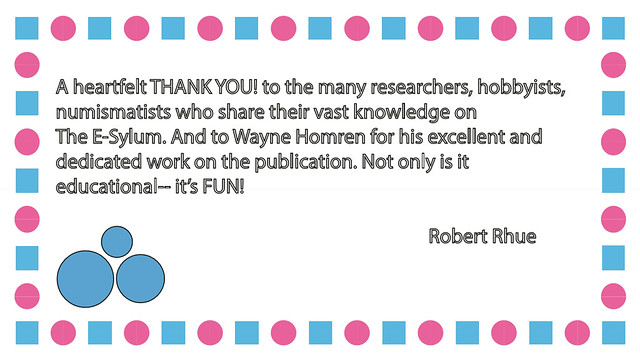
PREV ARTICLE
NEXT ARTICLE
FULL ISSUE
PREV FULL ISSUE
VOCABULARY TERM: EDGE LETTERING, PART 1Here's another entry from Dick Johnson's Encyclopedia of Coin and Medal Terminology. It's an interesting but lengthy one, so we'll save more for later issues. -Editor Edge Lettering and Numbering. Marking of any kind – letters, symbols, figures or ornaments – which is placed on the edges of numismatic or medallic items to add decoration, security or additional information about an item. This information may include such data as the identity of the artist, issuer or maker (often in the form of initials, hallmark or logo), the fineness, composition, serial numbering, maker's location, size of edition, copyright, data omitted from the design, the recipient's name or a variety of other facts or symbols. Edge lettering, or edge stamping, is often as significant as the designs and inscriptions appearing on the obverse and reverse. Most often the information is abbreviated or in the form of symbols and may not be readily understood at first glance. For the person who learns how to decipher edge markings, important details are revealed. First, if the item contains reeding or knurling on the edge, this usually indicates the piece was struck in a coining press with a single blow. The reeding is formed by the expansion of the blank against a restraining COLLAR. In contrast, a smooth edge reveals very little: it could be struck or cast, produced in a coining press or a medal press; it could have been struck with a collar or without a collar; it could have been trimmed or untrimmed. A smooth edge is like a blank page in a book – something needs to be placed on it to pass information on to the observer. Lettering was perhaps the first information placed on the edge of a coin or medal. French coins were first issued with lettered edges in 1577. In 1805, Matthew Boulton, then director of the Soho Mint in Birmingham, England, gave to each of the officers engaged in the Battle of Trafalgar a medal that bore a portrait of Lord Nelson. Around the medal was the edge lettering: TO THE HEROES OF TRAFALGAR FROM M BOULTON. From these early beginnings, coins and medals have come to be considered as having a "third side" for additional design or data. Coins were given such designs – one in particular was called engrailment – as a further protection against counterfeiting. Medals, while less concerned with security or counterfeiting, are generally not decorated around the edge, but often personalized for an individual recipient, or hallmarked attesting to maker and purity.
To read the complete entry on the Newman Numismatic Portal, see:
Wayne Homren, Editor The Numismatic Bibliomania Society is a non-profit organization promoting numismatic literature. See our web site at coinbooks.org. To submit items for publication in The E-Sylum, write to the Editor at this address: whomren@gmail.com To subscribe go to: https://my.binhost.com/lists/listinfo/esylum All Rights Reserved. NBS Home Page Contact the NBS webmaster 
|
